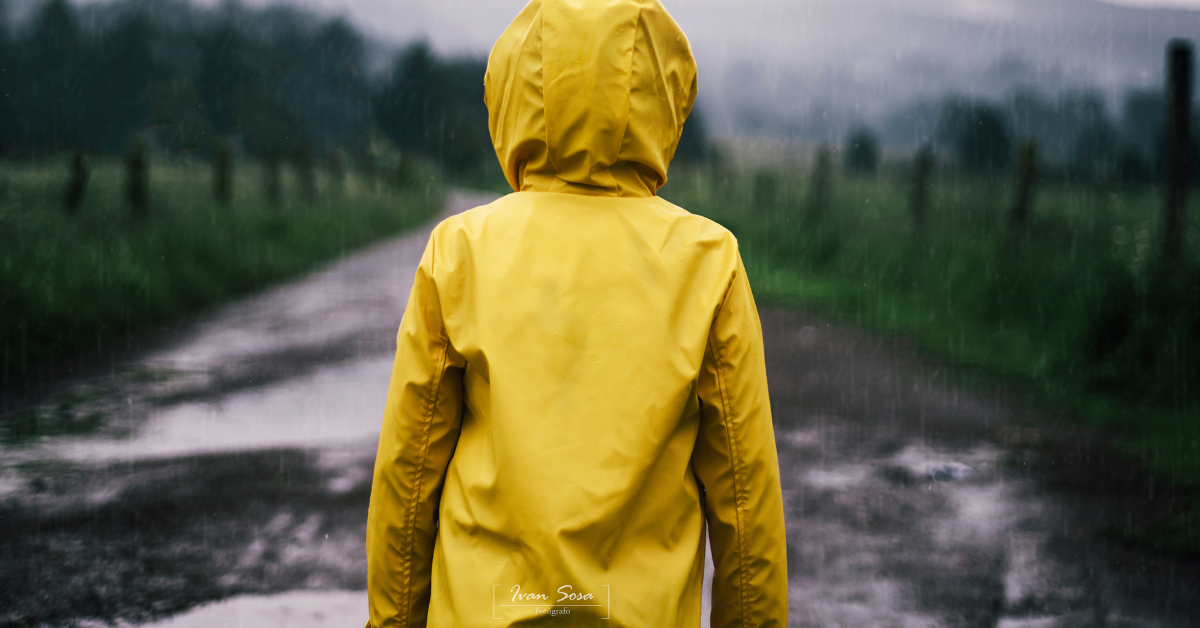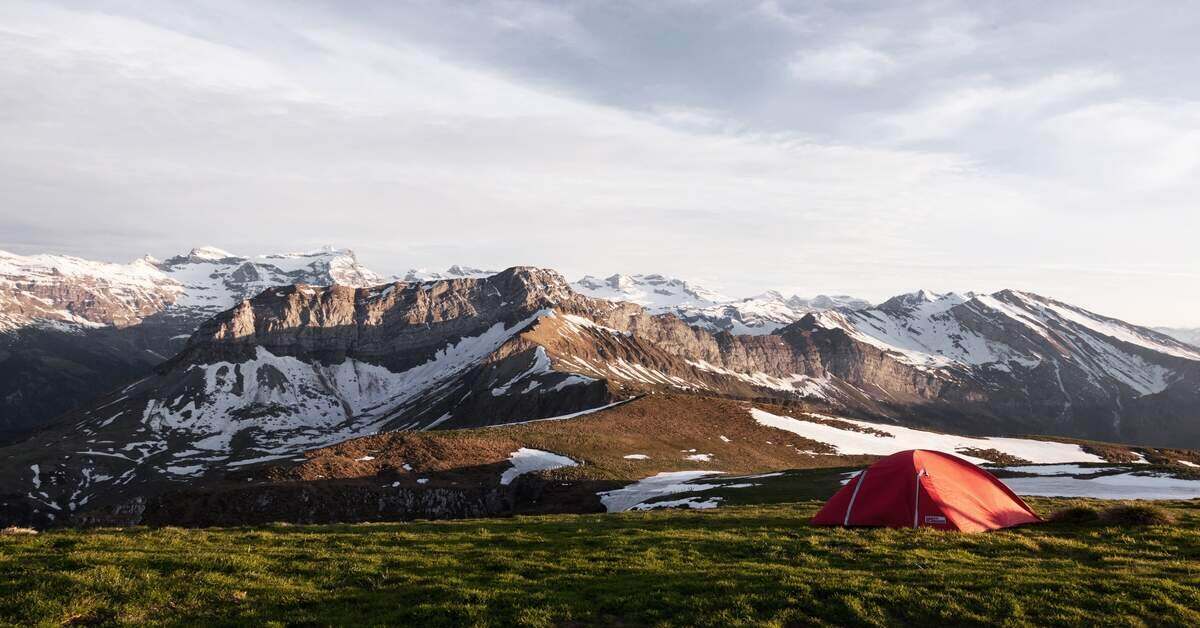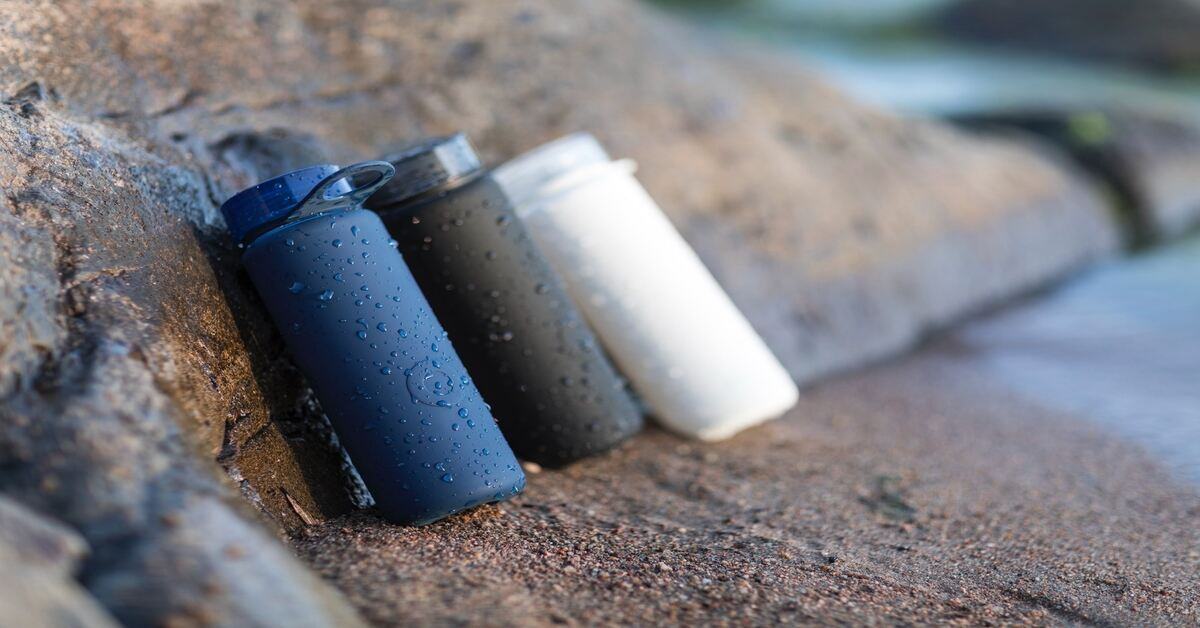Hiking in the rain can be a treacherous endeavor, but it need not be so! With some prep and planning, you can get out there and enjoy your hike without having to worry too much about getting soaked. Here are 35 tips for hiking in rainy weather that will help you stay dry en route.
-
Bring along a poncho or large plastic bag
You can purchase an affordable poncho at most camping stores. A poncho is an excellent choice because they’re inexpensive, easy to carry with you on the trail, and usually come with hoods that provide protection for your head (and hair).

Ponchos also usually have zippers or snaps at the bottom for ventilation should things heat up as well. If you have a large plastic bag, make sure it is waterproof and you can close it.
-
Waterproof backpack cover
Using a waterproof backpack cover is one of the simplest and cheapest ways to keep your backpack dry on a rainy hike. You can even use a garbage bag as a backpack cover. The material won’t breathe very well, so it’s best to only carry water-resistant gear inside or remove it completely if things get damp. The cover can also double as an emergency shelter (if a downpour starts and you’re without protection).
-
Wear synthetic clothing
Rather than hiking in cotton clothes or regular rain gear, pack some type of synthetic clothes that will keep your body warm and dry. Synthetics don’t absorb any water so they should provide a better buffer against rain. What you decide to wear is up to you, but if it’s cold and raining, a piece of clothing that might be thin when on its own could actually keep you warm if worn in layers.
-
Carry a waterproof jacket

Go for a high-quality rain jacket that will keep the rain away. Similarly, you might need to carry a waterproof shell if the rain is unexpectedly heavy and persistent. If you’re hiking in an area with high winds, it’s also smart to invest in some arm warmers (i.e., long sleeves that stop at your elbows). This will nip the chill in your arms and shoulders and keep them warm. Since rain jackets have low breathability, you might want to have wool base layers to get rid of moisture.
-
Wear breathable rain pants
While you might be hiking in the wet, your legs probably won’t be. Choose breathable fabrics to ensure they stay that way. If it’s a long hike, make sure the rain pants have zippers at the ankles so you can remove them when things heat up.

-
Use waterproof hiking boots
Synthetic materials should still be protected from water and so your choice in hiking footwear will need to be able to protect your feet from the water. Waterproof hiking boots or shoes should provide adequate protection for most types of rain and even give you added traction to prevent slips. Carry water-resistant gaiters as well.
-
Be Ready for hypothermia
As well as keeping warm on your hike, it’s also important to stay dry and prevent heat loss from your body. Hypothermia occurs when a body loses more heat than it produces. The coldness of the rain can lead to your core temperature dropping below 98 degrees Fahrenheit, which is sufficiently low that you could die.
To prevent hypothermia, a simple tip is to be prepared for the eventuality when hiking in the rain. A warm blanket and dry clothes will keep you warm until emergency services arrive or it’s time to call it quits and head home.
-
Bring along an extra pair of socks
Your feet will probably get wet at some point when hiking in the rain. The best thing to do is bring along an extra pair of socks to keep your feet warm and dry. Your socks should be made of wool or synthetic fibers to help protect your feet from blisters.
-
Try to hike during the break of day or evening
If it’s raining when you start, there will be less chance of rain for most of your hike. If necessary, seize opportunities to stay dry by stopping off at a coffee shop and waiting until the rain stops before continuing on.

Try to plan out your hikes so that they take place on less rainy days versus on the first day after it rains heavily. Depending on how wet the trails are, you may want to wait a day or two after heavy rain so that the trails will dry out and become less slippery.
-
Carry a small plastic bag with you
Use this to keep your cell phone or other electronic devices dry, even if they are in cases or pouches meant to be waterproof. If there is a chance of rain during your hike, it’s always best to carry around one of these bags just in case.
-
Make sure to check weather reports before you leave home
If it’s going to rain on your hike, then being prepared will help minimize the potential issues that could arise if you’re hiking in a place with no cell phone reception and are isolated from other people.
-
Consider bringing along a small umbrella
While most umbrellas have plastic handles that could melt from the heat of a fire, there are those made with metal frames instead. If hiking solo, this is another option for keeping yourself dry.
-
Pack dry clothes for when you finish your hike
This way you can change into something warm and dry if the situation calls for it, especially if more rain comes and leaves you covered in cold water from head to toe.
-
Carry trekking poles
If you’re hiking in the rain on trails that are in bad condition, then consider bringing a pair of trekking poles along. These can help you to stay balanced and safe if there is lots of loose rock or mud to walk over. Read the benefits of using trekking poles while hiking.
-
Stay on the trail
Try to hike only on familiar trails within the park. This way, your hiking trip won’t be negatively affected by development such as logging or the building of new roads in forests where you want to go hiking.
-
Hike in a group

This helps ensure that you have companionship on your trip as well as someone to help you if the situation becomes too dangerous or if you need extra help to make it out of a dangerous area due to injury. It also means that if it’s raining when you start your hike, there will be someone to share the experience with. It’s always nice to have a hiking buddy!
Related: Solo hiking tips
-
Keep your cell phone dry
When hiking with others, you can also use your cell phones to keep track of each other while on the trail. If no one is around, consider bringing along a small walkie-talkie for communication purposes. And if hiking on your own, you can keep the walkie-talkie with you or leave it at base camp. Be aware of coverage areas and plan ahead so there aren’t any potential issues later on in your hike.
-
Keep yourself occupied
While hiking, either play music or listen to podcasts to help pass time on the trail and keep your mind off of the fact that it’s raining. Listening to some music may also make hiking feel less of a chore because you don’t have to listen to the sounds of nature all around you. Many hiking trails are located in beautiful natural areas, so there may be many things to take note of and enjoy along the way.
-
Plan ahead for missing parts of your hiking gear
When part of your hiking gear gets soaked or lost, then it is best to bring along emergency hiking gear such as a small plastic bag or extra clothes in case you need them. Bring enough for the entire trip, just in case.
-
Stay Safe
If you get stuck or injured, try to find a low area such as a small cave or rock ledge to sit on. This way you will be off of the ground and there is less chance of getting hypothermia. Watch out for muddy trails and puddles. You don’t want to fall and injure yourself while hiking in the rain. Try to keep an eye out for lightning strikes when taking shelter so that you can move to safety if the area becomes struck by lightning. Also, be careful if you see cows or other large grazing animals on a trail.
They may charge you if they feel threatened by your presence. In addition, watch out for falling branches. Large branches and trees are still able to fall in the rain, so be sure you don’t get hit by one during your hike.
And try to avoid open fields where there is no shelter, including ridges. If you slip and fall off one of these areas, it could be more difficult to get up due to the slickness of the ground from the rain.
-
Focus on what’s around you
Pay attention to your surroundings and always watch where you are stepping. Focusing on the trail ahead can get you into trouble if there are things hidden in the ground or dangerous animals underneath puddles of water. It’s best to look around at your surroundings while hiking in the rain so that you don’t trip or fall over something.
-
Prepare for low visibility
Be ready for low visibility and slippery trails! It is important to obey all hiking signs and to plan ahead if possible. In order to be safe while hiking in the rain, it’s best to stay on marked trails and observe your surroundings carefully. Watch for slippery spots on the trail and pay attention to where you are walking so that you don’t end up in a dangerous situation. Bring a headlamp and some extra waterproof matches just in case. These are two very useful things to have on your hiking gear if you do end up injured or stuck out on the trail.
-
Carry Shelter
If it’s raining while hiking, choose trails that have shelter if possible, or bring a tent along with you if your hike will be taking place overnight. If a trail normally becomes wet even on blue-sky days, then avoid hiking there while it’s raining out as well.

-
Don’t hesitate to go back!
Sometimes it’s best to wait until the rain stops before hiking again. Don’t push yourself to continue if it’s too wet and you are uncomfortable with the situation. It’s always better to stay within your own physical limitations than try to exceed them in bad conditions.
-
Watch out for UV rays from the sun during rainy days!
Yes, you are exposed to UV radiation even on rainy days! Sometimes you don’t realize how bright the sun is even through a thick layer of clouds, which can be dangerous for your skin and eyes. Try to find shelter if possible while hiking in the rain just in case you end up on a poorly sheltered section of the trail that gets hit by sunlight!
-
Bring a first aid kit with you
Even if you don’t think it’s absolutely necessary to bring a first aid kit, just be ready for any possible injuries that may occur while on the trail.
-
Pack waterproof bags for all your important belongings
This includes everything from cell phones to cameras and more! Bring enough extra plastic bags with you so that if something gets wet, you can easily pack it away.
-
Bring snacks with you
Even if you’re not hungry, it’s good to have something to keep your energy levels up just in case. You may get an injury or feel like you need a break from hiking for whatever reason. With enough food, you will take more rests and increase your energy levels.
-
Stay hydrated

Bring a reusable water bottle with a lid that you can fill up. This way, you don’t have to purchase as many plastic bottles while on your hike and it’s easier to stay hydrated throughout the entirety of your trip! Also, bring a water filter with you. You may need to refill your water bottle while and can’t find any sources of clean drinking water along the path or nearby land. A personal water filter allows you to purify whatever water you get on the trail!
-
Carry a map
While most trails will be easy to follow, there are always a few that can use an extra map just in case. Therefore, pack a waterproof map so that you can use it comfortably when it starts raining.
-
Hike during the day
Hike early before it gets dark. Hiking in the rain can be quite dangerous if it’s already dark outside when you begin hiking on the trail, so it’s best to start your hike as soon as possible before it gets too late.
-
Bring a flashlight with you along with extra batteries
Just because you’re not hiking in the dark doesn’t mean that you can’t still bring a flashlight with you to help illuminate the path in front of you. It’s better to be safe and have one just in case!
-
Carry a trash bag
Make sure you always bring a trash bag with you the next time you go hiking in wet weather. Sometimes, when it rains outside before or during your hike, then there can be trash and debris left out on the trails that will only get worse if it continues to rain without any care. Bringing along a small trash bag helps collect all the trash and debris that you see along the trail. This is a great way to keep the environment clean!
-
Have extra rain gear
Carry an extra pair of hiking boots and hiking clothes just in case, all packed together into one waterproof bag. If rain catches up with you, these items with you will help keep your hiking trip from becoming a miserable and potentially dangerous experience. Remember, all your rain gear should be lightweight, breathable, and waterproof.
-
Waterproof gloves
Keep your hands warm by wearing lightweight waterproof gloves. It’s nice to have a place to keep your hands warm and dry while hiking even if you aren’t willing or able to bring along a full jacket.
Bonus point
If a storm starts in the middle of a hike and heavy rain begins falling, then it might be best to take shelter somewhere that is dry and safe until the storm passes. This way you can wait out the storm until it’s safe to head back out again. This is especially important in areas where there are high winds, hail, or other things that could possibly put you at risk of injury.
Follow these tips and hacks for hiking in the rain, choose to embrace Mother Nature’s beauty and what lies on the other side of fear…and I guarantee that you will enjoy your hike a lot more! If you have any questions or feedback about this article, feel free to leave me a comment below.

